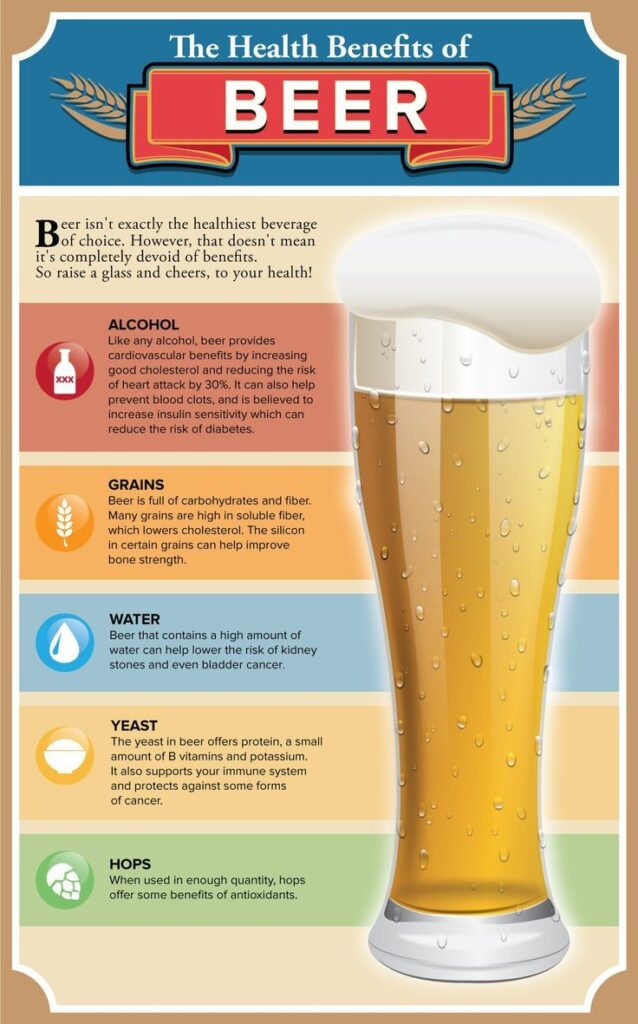Unravel the mystery of what really determines your beer buzz. Could it be more than just alcohol content? Find out!
Table of Contents
Whether you’re at a party, a barbeque, or simply relaxing at home, the question always seems to arise: How many beers does it really take to get drunk? The answer may not be as straightforward as you think. In this comprehensive blog post, we’ll dive deep into the science behind alcohol metabolism, individual tolerance levels, and the various factors that can influence your level of intoxication.
The Science of Alcohol Metabolism
Alcohol metabolism is a complex process that occurs primarily in the liver. When you consume alcohol, enzymes in the liver work to break down the alcohol into acetaldehyde, a toxic substance that is then further metabolized into acetic acid. This process allows your body to eliminate the alcohol from your system. However, the rate at which this process occurs can vary based on a number of factors.
One key factor that influences alcohol metabolism is your body weight. Generally, the more you weigh, the more water your body contains, which can help dilute alcohol and slow down its absorption into the bloodstream. Age and gender also play a role, with younger individuals and those assigned female at birth typically metabolizing alcohol more slowly than older individuals and those assigned male at birth.
Individual Tolerance Levels
When we talk about tolerance to alcohol, we’re referring to an individual’s ability to consume alcohol without experiencing significant cognitive or physical impairment. Tolerance levels can vary widely among individuals, with some people able to drink more without feeling drunk while others may feel intoxicated after just a couple of drinks.
Tolerance to alcohol can be influenced by a variety of factors, including genetic predisposition, frequency of alcohol consumption, and overall health. Over time, regular alcohol consumption can lead to an increase in tolerance as the body adapts to the presence of alcohol. This is why individuals who drink regularly may be able to consume more alcohol without feeling the effects as strongly.
Factors Influencing Intoxication
There are numerous factors that can influence how intoxicated you feel after consuming alcohol. One major factor is food consumption. Eating a meal before or while drinking can help slow down the absorption of alcohol into the bloodstream, reducing the likelihood of feeling drunk quickly. Staying hydrated and pacing your drinks can also help moderate the effects of alcohol.

Image courtesy of thebeerthrillers.com via Google Images
Another factor to consider is the types of alcohol you are consuming. Mixing different types of alcohol can increase the likelihood of experiencing negative side effects, such as nausea or headaches. Knowing your limits and listening to your body are key to responsible drinking.
Conclusion
Understanding how alcohol affects your body and the factors that can influence your level of intoxication is essential for safe and responsible drinking. By knowing your own tolerance levels, pacing your drinks, and being mindful of the factors that can impact your alcohol metabolism, you can ensure a more enjoyable and safer drinking experience. Remember, moderation is key when it comes to alcohol consumption. Drink responsibly and prioritize your health and well-being above all else.
FAQs
Question 1: How does body weight affect alcohol metabolism?
Answer 1: Body weight can impact alcohol metabolism, with heavier individuals generally having more water in their bodies to help dilute alcohol and slow its absorption into the bloodstream.
Question 2: Can tolerance to alcohol be increased over time?
Answer 2: Yes, regular alcohol consumption can lead to an increase in tolerance as the body adapts to the presence of alcohol.
Question 3: How does food consumption affect intoxication levels?
Answer 3: Eating a meal before or while drinking can help slow down the absorption of alcohol into the bloodstream, reducing the likelihood of feeling drunk quickly.
Question 4: Is it safe to mix different types of alcohol?
Answer 4: Mixing different types of alcohol can increase the likelihood of negative side effects, such as nausea or headaches. It’s best to know your limits and stick to one type of alcohol to prevent adverse reactions.
Generated by Texta.ai Blog Automation


Leave a Reply